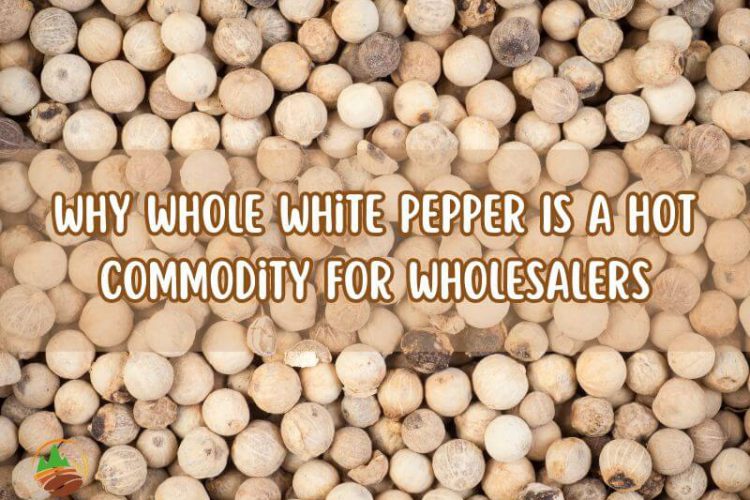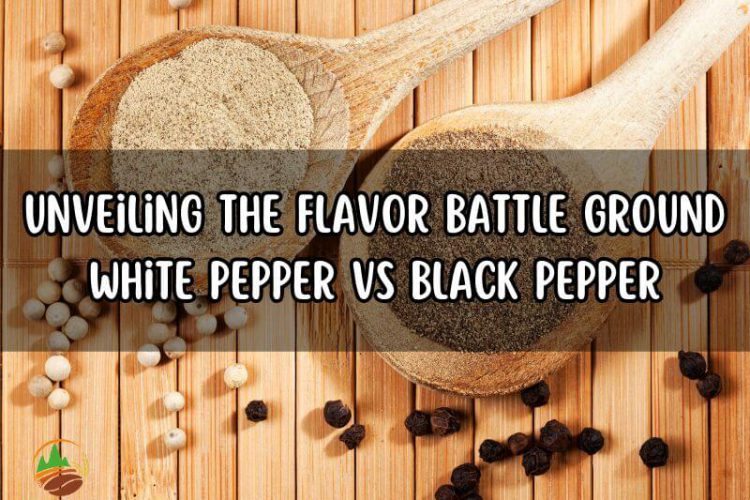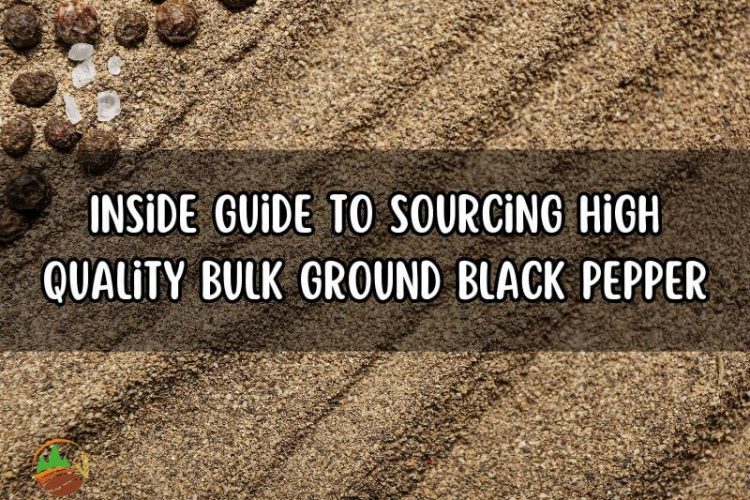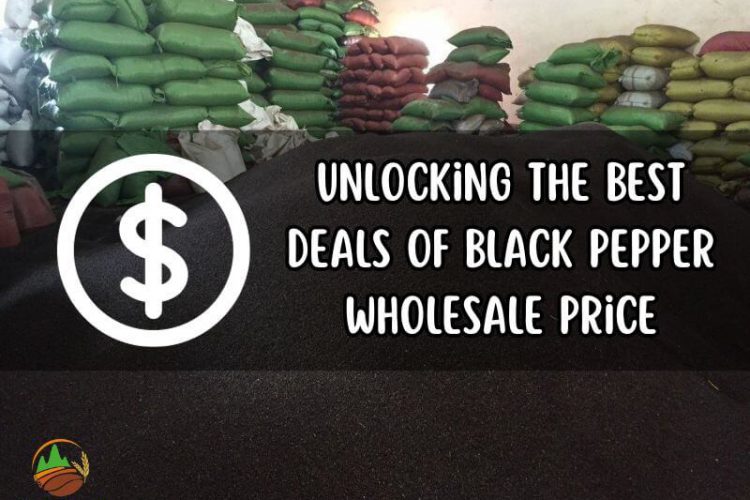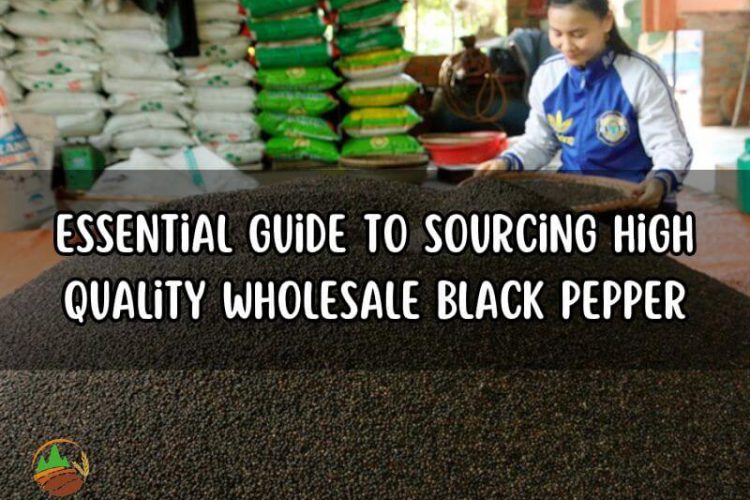As cinnamon exporters viewed cinnamon as a tree species with great economic worth and prospective earnings. Let’s take a look at what cinnamon exporters have done recently for the global cinnamon trade. This post will help you answer the question which country exports the most cinnamon in the world.
Table of contents
- 1. Cinnamon exporters – Top countries exporting most cinnamon in the world
- 2. Common cinnamon categories of cinnamon exporters
- 3. Factors influencing products’ price of cinnamon exporters
- 4. How to approach reputable cinnamon exporters in the market?
- 5. Top 5 suggested Cinnamon exporting countries and their cinnamon exporters.
Cinnamon exporters – Top countries exporting most cinnamon in the world
Let’s discover some top the cinnamon exporting countries that you can refer to. Cinnamon is the oldest known plant, dating back thousands of years. The Chinese found this plant and carried it throughout the world through the Silk Road. Cinnamon is a woody, long-lived tree with rough, aromatic bark that is mostly picked by cinnamon exporters.
Between 2019 and 2020, global of cinnamon increased by 34.8%.
During 2020, three nations (China, Vietnam, and Sri Lanka) produced 88.6 % of the world’s cinnamon exports. This percentage reveals a relatively concentrated international market for the highly sought-after spice.
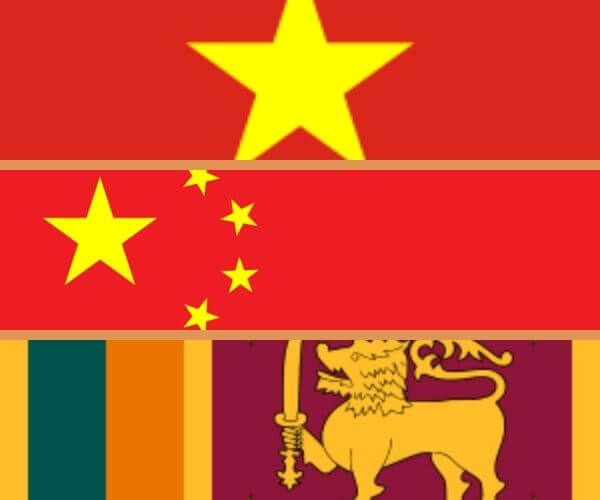
China is the large cinnamon exporter
China is the largest cinnamon exporter in the world with $292,9M, according to the most recent statistics in 2020. China is one of the leading cinnamon producing countries in the world.
- Cinnamon producers in China are a centuries-old agricultural commodity.
- According to some theories, the Chinese brought cinnamon to the world, notably cassia cinnamon.
- The Chinese homeland, similar to Vietnam, grows mostly in the provinces of Guangdong and Guangxi, where the temperature is tropical, hot, and humid, ideal for the Cassia breed.
Vietnam is one of the biggest cinnamon producers
By volume, Vietnam is one of the world’s biggest cassia cinnamon exporters and producers. Cinnamon cultivation covers more than 150,000 hectares and provides a source of income for hundreds of thousands of ethnic minority households in rural regions, while also contributing to the socio-economic development of many communities.
In 2020, Vietnam shipped $238,1 million worth of cinnamon trade, making it the third cinnamon exporting country. Cinnamon was the 181st most exported item in Vietnam just this year. India, the United States, Bangladesh, Indonesia, and South Korea are the key markets for Vietnamese cinnamon exporter. (Source: OEC)
Vietnam is one of the nations with appropriate climate conditions for the cultivation of cinnamon because of the following reasons:
- Cinnamon is a plant that requires particularly unusual natural circumstances and may be cultivated in specific tropical places with lots of sunshine, lots of rain, high humidity, and so on.
- Cinnamon grows well on loamy soil.
- The plant prefers a cold environment with an average temperature of 20-25°C and is porous and airy, with a slope of 10-20°.
Sri Lanka is the leading ceylon cinnamon exporter
Ceylon cinnamon is indigenous to Sri Lanka; it has a rich, inviting aroma and a sweet flavor, and its quills are delicate and light brown in color.
- Cassia is native to various Asian cinnamon export countries such as China, Indonesia, and Vietnam; its bark is tough with a rough texture, dark brown in color, and has a stronger and spicier taste.
- However, Ceylon cinnamon is more popular in the Western market since it is considered to be of superior quality than cassia.
- As a result, the Western destinations for Cinnamon exporters from Sri Lanka are Mexico, the United States, Peru, Guatemala, and Colombia.
- Sri Lanka exported $216,4 million in cinnamon in 2020, making it the world’s second-largest exporter of spice.
Common cinnamon categories of cinnamon exporters
Cinnamon is a commercial plant that provides several economic benefits and long-term development to many mountainous places across the world. They are frequently interested in cinnamon kinds and production locations, and the prices of these commodities.
Cinnamon exporters’ main commercially grown species
Ceylon and cassia cinnamon are the two most common varieties of cinnamon manufacturers. They have a variety of features ranging from look to composition to commercial worth.
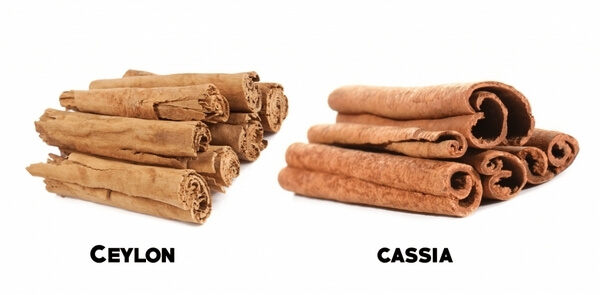
Ceylon
- Ceylon cinnamon, sometimes known as “true cinnamon,” is indigenous to Sri Lanka and India’s southern districts; Sri Lanka is one of the largest exporter of cinnamon of Ceylon. It is manufactured from the inner bark of the Cinnamomum verum shrub.
- Ceylon cinnamon is a light brown spice with numerous closely intertwined threads and a delicate outer covering. These characteristics give it a high grade and distinct texture.
- Ceylon cinnamon is a less common spice that has long been used in cuisine. When compared to the common Cassia cinnamon, it is relatively pricey for its cinnamon exporters – Sri Lanka. Ceylon cinnamon has a sweet, mellow taste that works well in pastries.
- Cinnamaldehyde is present in 50-63% of its essential oil, significantly less than Cassia cinnamon. This explains why its perfume and flavor are so delicate.
Cassia
- Cassia cinnamon is derived from the Cinnamomum genus (scientific name is Cinnamomum aromaticum). It is native species to southern China and is known as Chinese cinnamon. However, numerous other species are now commonly farmed throughout East and South Asia. The cassia cinnamon exporters are mainly Vietnam and China.
- Cassia cinnamon has a thick crust that is deep reddish-brown in coloration. It is also coarser and grainier in texture than Ceylon cinnamon. Cassia cinnamon is said to be of inferior quality. It is very affordable and frequently consumed all around the world. The majority of cinnamon sold in supermarkets is Cassia from Chinese cinnamon exporters.
- Cassia cinnamon has been utilized in traditional Chinese medicine and cookery. Cinnamaldehyde accounts for approximately 95% of its essential oil, giving it a very pungent spicy flavor.
Popular product from cinnamon exporters in the world
Cinnamon is harvested and processed into a variety of final goods that fulfill many different purposes. There are at least four types of cinnamon that are regularly purchased by cinnamon exporters.
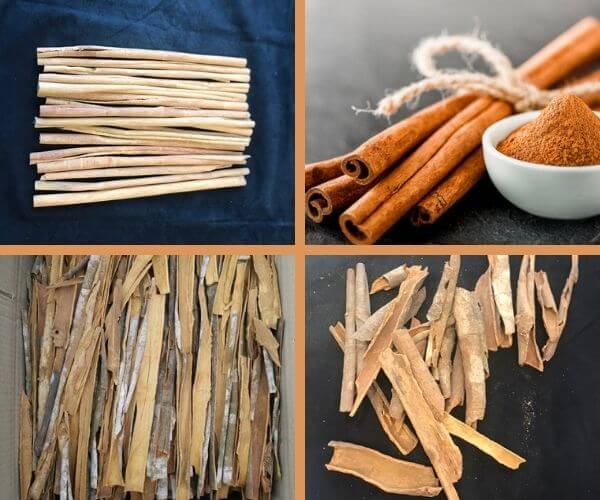
- Stick cinnamon
The result is coiled, tiny, 1.5-2cm in diameter, and around 15-20cm long, resembling a chopstick. The price of the stick varies based on humidity, essential oil concentration, and the extent of the roll according to cinnamon exporters. The perfume of cinnamon sticks is woodsy, earthy, and spicy, and it might irritate the nose. Their flavor is pleasantly sweet and woodsy, with a warm spiciness and somewhat bitter overtones. Cinnamon sticks are accessible all year, with the bark often gathered in the fall. The average whole price of the cinnamon stick would be $3.9 – $5/kg
- Cigarette cinnamon
Cinnamon sticks, also known as quills, are hollow coiled pieces of tree bark with a length of 7 to 10 cm. The stick’s surface is reddish-brown and rough to the touch. Cinnamon sticks have a deeper, gray-brown color on the inside and a smooth, powdery texture. The bark’s ends curve inward, forming a thick scroll. The rolled bark thickness can range from 5 to 10 millimeters, which cinnamon exporters make the sticks difficult to break and ground. The price of cinnamon cigarettes in bulk is estimated to be $4.2 – $5.3/kg.
- Split cinnamon
Cinnamon manufacturers harvest while cinnamon is still in its shell, split and dried, and then put inboxes. Split cinnamon is created by dividing cigarette cassia with a width of about 3cm, then cleaning it, removing impurities, and packing it into boxes in accordance with export regulations. In countries such as India and Bangladesh, split cassia is quite popular. The essential oil level of this product is modest, ranging from 1.5 to 2%. The recent split cinnamon’s approximate price range is $2.3 – $2.9/kg.
- Broken cinnamon
The sections of Cinnamon bark are broken into numerous pieces during transportation and manufacture, or the branches of cinnamon plants are peeled and only get little fragments; we have gathered broken cinnamon and eliminated contaminants. Broken cinnamon is used to generate cinnamon powder, which is then used to make cinnamon essence oil, perfume bags, and cinnamon incense sticks, among other things by cinnamon exporters at a lower cost than pure cinnamon bark. Broken cinnamon are products peeled from branches, broken bark, unshaped bark, essential oil content in this product is low, about 1%, cinnamon is broken in four parts, the thick, essential oil is higher, 2-4%. The cheapest one – broken cinnamon cost is in the projected price range of $1.6 – $2/kg.
Factors influencing products’ price of cinnamon exporters
The pricing of cinnamon exporters’ products is influenced by a multitude of issues.
Cinnamon exporters production
Cinnamon is a commodity that is not affected by seasonality. When the price of cinnamon is low, farmers would not harvest; nevertheless, the cinnamon tree grows and harvests the following year, the next crop…, so the price of cinnamon is largely consistent; the price changes but the difference is minimal. As a result, cinnamon output has little effect on the selling price, and cinnamon exporters in the world can alter their prices as needed.
Demands
India, the Middle East, Japan, Korea, the United States, and Europe are among the nations with strong cinnamon import demand, with yearly total import value reaching $400 million.
Since 2016, there has been a growth in the demand for cinnamon imports into India. Up to 2019, the growth of imported cinnamon volume in India is over 27%, with Vietnam being the largest cinnamon exporter to India. During this time period, Vietnam’s exports climbed by 34%, while Indonesia’s share fell. Specifically, the quantity of cinnamon imported by India from Vietnam quadrupled (from $25 million to $50 million) between 2016 and 2019.
Because of the growing demand from Indians for Vietnamese cinnamon, the price of cinnamon from Vietnamese exports surged in 2018, making Vietnam the most highly-priced exporter. Despite increased exports to India, the wholesale price of cinnamon has remained steady.
Specifications of cinnamon
| Specifications | Tube cinnamon | Stick | Cigarette | Split | Broken | Powder |
| Moisture content | 12% | 12% | 12% | 12% | 12% | |
| Volatile oil | 2-5% | 2-4% | 2-4% | 1.5-4% | 1-5%, > 2% | |
| Length | 30-45cm | 15-20cm | 8-10cm | 30-45cm | x | |
| Thickness | 1-5mm | 2-3mm | 1,5-2mm | <1.5mm | x | x |
The price of these cinnamon exporters is mostly determined by criteria such as moisture level, essential oil content, product roll extent… The most noticeable price distinction between the cinnamon types in the table is a volatile oil.
Shipments
For exporting commercial goods from cinnamon exporters in Vietnam, there are two options: ocean and air freight. Each choice has advantages and disadvantages.
- Sea freight:
Full Container Load (FCL) a separate container is rented to deliver orders. When transporting big quantities of goods, FCL shipping may be the most cost-effective alternative.
Less than Container Load (LCL) puts items into a shared container with many other orders. LCL is ideal for smaller orders since it reduces transportation expenses.
- Air: If time is of the essence, air shipment may be the best alternative. Flying products from one nation to another is both faster and more flexible than ocean shipment. However, it is far more expensive than transporting them by sea. So most cinnamon exporters prefer sea freight.
Shipping expenses have an impact on the price of things sold. If that component of the cost is large, cinnamon exporters are obliged to raise the price of their product. Therefore, in order to lessen the financial load, they will use the most cost-effective delivery options available.
How to approach reputable cinnamon exporters in the market?
Bulk wholesale activities in the international market necessitate great assurance on the part of both parties in order to prevent excessive risks.
Character traits of trustworthy exporters
When looking for a cinnamon exporter, the unavoidable objective is to find cinnamon exporters with a good reputation in order to avoid needless risks.
- Request references from foreign enterprises Three references from firms in a foreign nation where the inquirer works. Request the following information: cinnamon exporter name, address, contact name, email address, phone number, and Skype ID. If the foreign firm is untrustworthy, it will not reply. It is a reason for concern if it just supplies one reference. Obviously, if it’s a startup, it’ll have a few references to provide, but it should inform this straight away.
- Contact the Consulate General or the Embassy Inquire about the company’s history, reputation, size (number of workers and revenue), and so on. This will aid in the accurate confirmation of the partner’s information.
- Valid business license The first condition for being able to conduct business lawfully is that cinnamon exporters be legally licensed. A business license is a confirmation of a company’s trustworthiness and ability to provide decent service. And there will undoubtedly be a large number of clients.
- Search into industry sources (Big Banks, Law Firms, and Accounting Firms) The staff will supply the bank account details for cinnamon exporter. In addition, the bank gets access to the account’s transaction history. Then, the bank accounts would have been reviewed. It’s a red sign if nothing shows up. If the bank, on the other hand, has information indicating a long history of transactions, that’s a good sign – proceed with care and hope for the best cinnamon exporter.
- Use search engines In this day and age, social networks are becoming an efficient advertising environment, therefore cinnamon exporters are attempting to push content on the internet, assisting people in reaching out and interacting. If nothing comes up, there’s a problem. Even if the cinnamon exporters are located on the Internet, use the methods outlined above to verify and check the firm’s validity. Furthermore, do the cinnamon exporters have a free blog that is utilized as a website, or does it have a robust online presence, including a website, blog, Twitter, Facebook, LinkedIn, and Google+ profiles that are all active? The more recent they are, the more likely the company is legitimate.
- Call the cinnamon exporter Picking up the phone and calling someone may seem archaic, but it can tell how quickly someone is on the up and up just by whether he or she answers the phone or even if the number is in service. It simply takes a few minutes to contact and see how much a partner’s goodwill would be like.
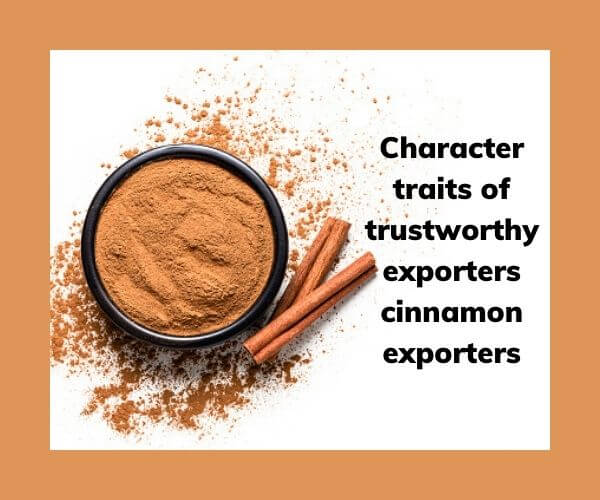
Scammer warning indicators
Fraud to usurp assets (goods, money) of partners and sales is extremely widespread in international commercial activities. Here are some of the warning indicators of fraud while dealing with cinnamon exporters without any references.
- The lack of a website by cinnamon exporters is an apparent red flag, but in today’s more sophisticated schemes, scammers still have their own websites and are even professionally invested. However, if you are cautious, scam signs such as misspellings, unusual domain names, or material with no alignment or refinement can still be identified.
- Cinnamon exporters will want to aggressively share the company profile and not be scared to face the face while working with their partners, thus facetime with consumers is required since working demands openness. As a result, exporters that actively disguise their identities are suspected.
- Most scammers’ product information is unclear and misleading. To entice importers, product prices are substantially lower than the market, taking advantage of clients searching for cheaper supplies from other cinnamon exporters in the world
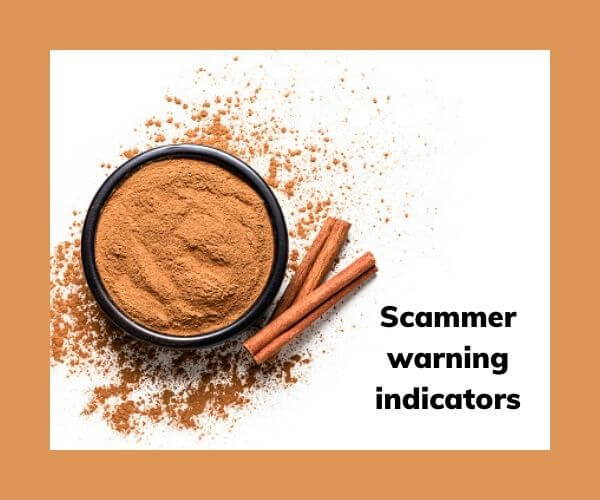
Working with Cinnamon Exporter: Steps to Take
Most cinnamon exporters have at least 5 phases in their operation. This assists the cinnamon supplier and buyer by ensuring product quality, negotiating costs, and smooth shipment.
Step 1: Get the cinnamon exporter contacts
Once a good cinnamon exporter has been identified via research, the first step is to contact them. On their website, contact information and methods are clearly displayed in the “Contact us” section. The name of the website, phone number, email address, and accounts or fan page on the most commonly used social networks are normally included.
Step 2: Make a Cinnamon order
The staff will advise the buyer on the sorts of cinnamon available from the cinnamon exporter that are appropriate for the customer’s demands. Alternatively, create cinnamon in accordance with their form criteria, assisting buyers in understanding the product’s characteristics and pricing.
Step 3: Have cinnamon made and packaged
Products are packaged in accordance with the cinnamon exporter procedures and the buyer’s request. This procedure will take between one-two week to complete.
Step 4: Make a payment and delivery
This is a crucial step that varies based on the recipient nation. Then, at the items above, the specific policy for each client group will be defined by the cinnamon exporter.
Step 5: Aftercare for partners
- Managers of cinnamon exporters that work with the importer community listen to complaints, difficulties, and sourcing barriers from partners and intervene quickly to find a solution.
- Maintain direct touch with buyers via the cinnamon exporter newsletter to keep them informed about any export developments.

Top 5 suggested Cinnamon exporting countries and their cinnamon exporters.
The most general information about the proposed cinnamon exporters, such as their firm name, location, and contact information are shown below:
Hanoi Cinnamon offers Vietnamese cinnamon products
Hanoi Cinnamon sells high-quality agricultural goods from Vietnam to the rest of the globe. Hanoi Cinnamon , founded in 1996, is delighted to be one of Vietnam’s major cinnamon exporters, receiving official tacit support from the Vietnam Ministry of Industry & Trade. Quality is King – The cinnamon exporter’s statement is fascinating. Their high-quality Vietnamese cinnamon is appreciated for its strong aroma and rich taste.
Brand: Hanoi Cinnamon
Samples: Send via Express (DHL, VPS, FedEx,..)
Order: By Air or By Sea based on INCOTERM 2010
Contact Hanoi Cinnamon for WHOLESALE PRICE:
- Phone: +84961504190 (Whatsapp Available)
- Website: hncinnamon.com
- Email: hanoicinnamon1@gmail.com
Rempah Sari from Indonesia
Rempah Sari is Indonesia’s one of the largest important cinnamon exporters. It was founded in 1964 and initially traded in a variety of commodities including clove, coffee, nutmeg, essential oils, and cinnamon. They have specialized in the cassia business for a few years and have become one of the largest cassia exporters from Indonesia, with an annual export capacity of 2.500 – 3.500 tons.
Hanfimex from Vietnam
Hanfimex Group is one of the leading spice exporters in Vietnam. With more than 17 years of experience in Vietnam’s agricultural products industry, Hanfimex is a reliable business to buy Vietnamese agricultural products in bulk such as cashew nuts, pepper, cinnamon, coconut,…
Jining Sunagro Trade from China
Sunagro is a growing vegetable and fruit seller in China. Over the course of a decade, the firm has grown from a tiny farm to one that is involved in farm farming, processing, and exporting fresh fruit. Jining Sunagro is one of the largest exporter of cinnamon in China.
Rathna Producers cinnamon exports from Sri Lanka
Rathna Producers Cinnamon Exports (Pvt) Ltd., which began in poor circumstances in 1985, is now one of Sri Lanka’s leading cinnamon exporters and one of the country’s significant foreign exchange-earners. The firm is now a globally recognized cinnamon exporter, as certified by Sri Lanka’s Board of Investments. The company is one of the famous ceylon cinnamon exporters in the global market.


